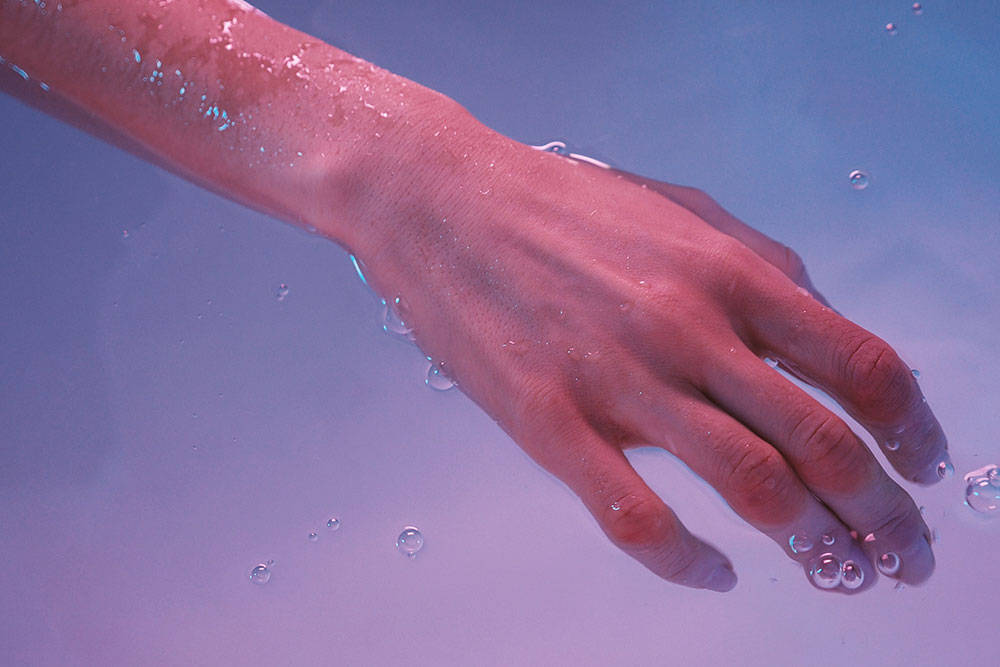Signing up—and paying—to enter a “sensory deprivation tank” sounds about as crazy as it gets. But, the wellness benefits of flotation therapy are nothing short of legitimate. Devotees claim that floating delivers deep relaxation, along with pain reduction, better sleep and less anxiety. Here, what to expect from the growing practice.
What is a sensory deprivation tank?
First designed in 1954 by American physician and neuroscientist John C. Lily, a sensory deprivation tank (also known as an isolation or flotation tank) is a dark, soundproof tank that’s filled with about one foot of salt water so you can float more easily. These tanks are used for restricted environmental stimulation therapy, or REST.
You May Also Like: What Is Facial Cupping?
Lily’s first tank was designed as he was was researching the concept of consciousness by depriving the user of all external stimuli. Commercial float tanks were created starting in the 1970s.
What can I expect from flotation therapy?
Studies suggest time spent floating in these tanks may offer benefits including muscle relaxation, better sleep, decrease in pain and decreased stress and anxiety. Today, there are dedicated spas for the practice of float therapy, and countless spas and resorts have begun to offer similar treatments.
In a private room, you will be asked to enter the tank nude (you can also wear a swimsuit if you prefer) and once the tank’s lid or door is shut, you’ll be completely cut off from all outside stimulation, including light and sound. Music may play inside the tank to help you relax, but will likely stop after 10 or so minutes. Flotation sessions are usually 60 or 90 minutes long, and the tanks themselves vary in size, but are usually more than seven feet long and four feet wide.
Afterwards, you’ll likely feel less stressed. A 2018 study showed that a one-hour session in a sensory deprivation tank significantly reduced anxiety and improved mood in the 50 participants with stress- and anxiety-related disorders. A 2016 study showed that 46 participants who self-reported generalized anxiety disorder (GAD) found that flotation therapy reduced symptoms such as irritability, fatigue, depression and sleep difficulties. In fact, there are many claims that flotation-REST causes feelings of overwhelming happiness and euphoria—while controversial, many users have also reported having hallucinations in sensory deprivation tanks.
Flotation therapy is also shown to help with pain. A 2017 study researched the effects of flotation therapy on chronic back pain and the collateral effects of sleep, depression and anxiety—all participants cited chronic pain for more than five years—and floating showed a direct and positive effect on the reduction of back pain.
How often should you float?
Flotation therapy can be used as often or as little as you’d like. Many wellness spas and float studios offer “floating memberships,” so you can choose between floating every day, monthly, or whenever you need to unwind.
Is there a claustrophobia-friendly alternative to float tanks?
If tight spaces aren’t for you, innovative treatments such as the Soft Pack Float Treatment, offered at The Reeds at Shelter Haven’s state-of-the-art Salt Spa in Stone Harbor, NJ, promise similar wellness benefits without any of the cramped feelings.
While traditional flotation tanks use water and tons of epsom salt to treat the skin and detox it, dry flotation focuses on the relaxing of the joints and muscles, but still keeps a strong focus on relaxation.
Instead of a tank, the Soft Pack is a heated flotation bed that lightly submerges you into a pressure-free cushion of water—almost like hanging in a cozy hammock, complete with blankets and an eye mask—all without getting wet.
“As you lay on the bed, there is a feeling of weightlessness, almost a sensation of floating, which delivers deep relaxation to the body and mind,” explains Carolyn Holdsworth, spa director of the Salt Spa. “After just one 30-minute session ($135), muscles are relaxed, tension is eased and the body is in a state where, if followed by a massage, a much more therapeutic benefit will be achieved,” she adds. “Not to mention, a 30 minute float session is the equivalent to four hours of sleep!”

















